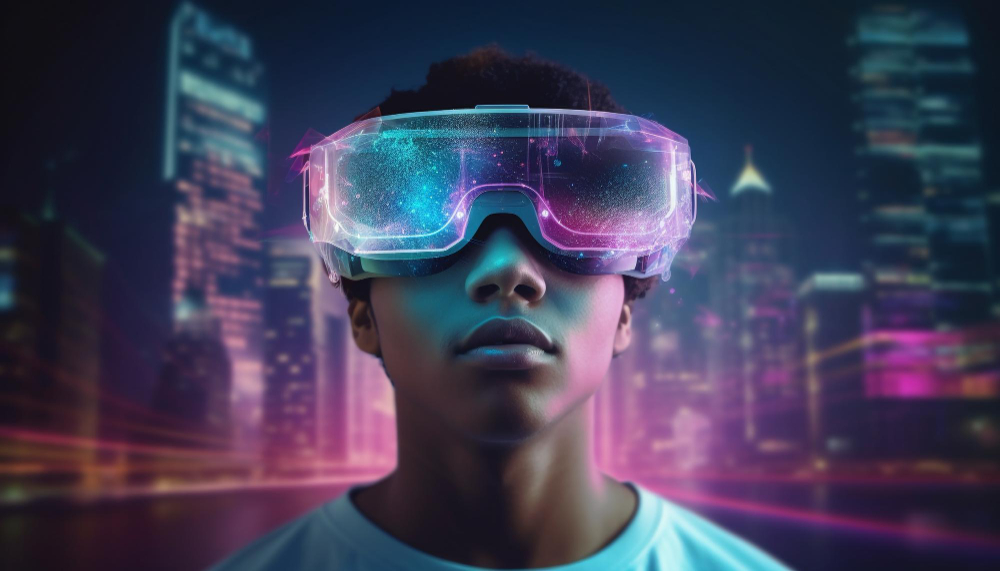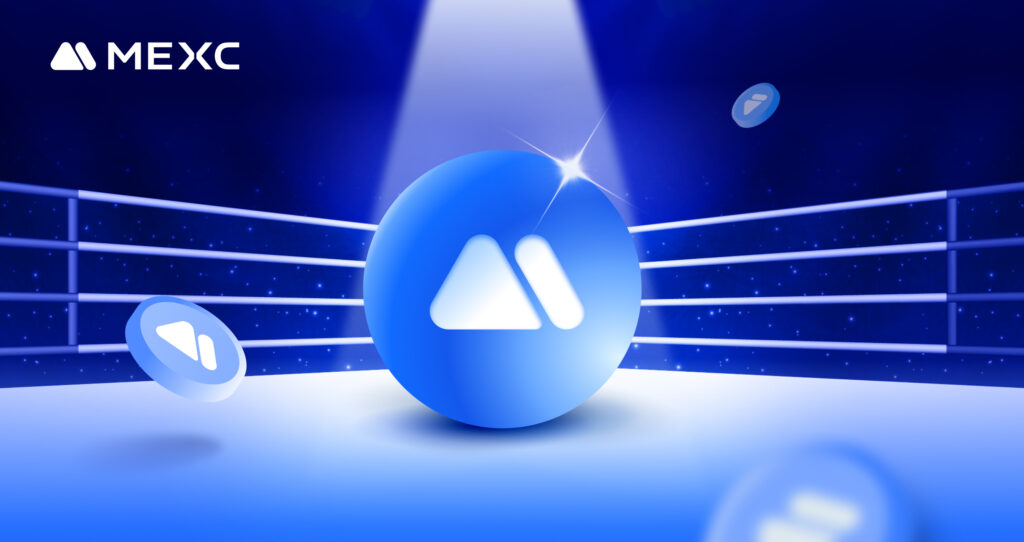The metaverse market is still in its early stages, but it is growing rapidly. According to market research firm IDC, the metaverse market is expected to reach $800 billion by 2024. The number of metaverse users is expected to reach 400 million in 2023. The metaverse market is expected to generate $54.95 billion in revenue in 2023 and the total market cap of the metaverse is expected to reach $490.40 billion by 2030.

TL;DR:
- The metaverse is a shared virtual space where people can interact, create, play, and socialize.
- It combines technologies like virtual reality (VR) and augmented reality (AR) to provide immersive experiences.
- The market for the metaverse is expected to reach $800 billion by 2024, with 400 million users by 2023.
- Meta (formerly Facebook), Roblox, Decentraland, Fortnite, and Minecraft are examples of the metaverse.
- Recent developments in 2023 include the Consumer Electronic Show (CES) focusing on the metaverse and Web3, Meta facing challenges, the emergence of GameFi combining gaming and decentralized finance, and the popularity of metaverse-focused blockchains like MOOI Network.
Understanding the Metaverse
In recent times, you may have come across the term “metaverse” being used by tech companies, media outlets, or even celebrities. But what exactly does it mean, and why is it such a significant concept? In this article, we aim to provide a beginner-friendly explanation of the metaverse, shedding light on its features, offering examples, and discussing the benefits it brings.
The metaverse as a word combines “meta,” meaning beyond, and “universe,” referring to everything that exists. It describes a shared virtual space where individuals can interact, create, play, and socialize. Think of it as the next phase of the internet, where users can have immersive and personalized experiences across various platforms and devices.
Rather than being a singular place or product, the metaverse encompasses diverse enhanced online environments. These range from popular online video games like Fortnite and virtual workplaces like Microsoft’s Mesh to virtual dressing rooms and even virtual operating rooms.
It’s important to note that the metaverse isn’t a new idea; it has been a concept inspired by science fiction for decades. Author Neal Stephenson coined the term in his 1992 novel Snow Crash, which depicted a virtual reality world accessed through special goggles and gloves. Other influential works of fiction include Ernest Cline’s Ready Player One, the Wachowskis’ The Matrix, and James Cameron’s Avatar.
Types of Metaverses
There are many different types of metaverses, but they can generally be divided into two categories:
- Social metaverses:
These are metaverses that are designed for social interaction. They allow users to meet up with friends, family, and other people from all over the world in a virtual space. Some popular social metaverses include Second Life, VRChat, and Roblox.
- Gaming metaverses:
These are metaverses that are designed for gaming. They allow users to play games with other people in a virtual world. Some popular gaming metaverses include Fortnite, Minecraft, and The Sandbox.
Key Features of the Metaverse
As the metaverse continues to evolve, there isn’t a fixed consensus on its exact appearance or functionality. However, several common features are often associated with the concept:
Immersion:
The metaverse aims to provide users with a realistic and captivating experience, making them feel as if they are truly in another world. Achieving this involves technologies such as virtual reality (VR), augmented reality (AR), mixed reality (MR), spatial audio, haptic feedback, and more.
Persistence:
Unlike traditional online experiences, the metaverse is always accessible and remains active, regardless of whether users are online or offline. It retains information about users’ actions and changes over time, ensuring continuity.
Interactivity:
The metaverse facilitates various forms of user interaction, both with other users and with the virtual environment itself. Users can communicate through voice, text, gestures, and expressions. Additionally, they can create, modify, share, and trade digital content and assets, such as games, art, and music.
Identity:
In the metaverse, users can create and personalize their digital representations, known as avatars. This empowers users to choose how they appear, sound, and behave within the virtual world. Moreover, users can have multiple identities or personas suited for different contexts or purposes.
Economy:
The metaverse supports a novel digital economy where users can generate value and income through their activities and creations. Users can use cryptocurrencies or tokens for buying and selling goods and services within the virtual world. Furthermore, they can earn rewards or incentives for playing games or completing tasks.
Examples of the Metaverse
While the metaverse is an emerging concept, several platforms and projects are actively working toward its realization. Here are a few noteworthy examples:
Meta (formerly Facebook):
Meta is a major tech company heavily investing in the metaverse. It envisions creating a social VR platform where users can connect with friends and family in immersive virtual spaces. Meta’s products include Oculus Quest 2 (a VR headset), Horizon Worlds (a social VR platform), Horizon Workrooms (a VR collaboration tool), Spark AR (an AR creation tool), and more.
Roblox:
Roblox is a popular online gaming platform that allows users to create and play user-generated games. It features a virtual world where users can explore and interact with various games and experiences. Roblox provides a glimpse into the potential of the metaverse by offering a vast and diverse virtual ecosystem where users can socialize, create, and monetize their creations.
Decentraland:
Decentraland is a blockchain-based virtual world where users can buy, sell, and trade virtual land, known as LAND, using cryptocurrency. Each parcel of LAND represents a unique piece of the metaverse that users can develop and monetize. Decentraland allows users to explore, build, and interact with others in a decentralized and user-owned virtual environment.
Fortnite:
Although primarily known as a popular battle royale game, Fortnite has evolved into a social and interactive platform with metaverse-like elements. It hosts live events, concerts, and virtual gatherings where millions of players can come together in a shared virtual space to experience unique and immersive moments.
Minecraft:
Minecraft, a sandbox game, has a thriving modding and multiplayer community that showcases some aspects of the metaverse. Players can create and share their virtual worlds, collaborate with others, and even participate in large-scale collaborative projects such as building replicas of real-world landmarks or creating interactive experiences.
Recent Metaverse Developments and Trends in 2023
The metaverse has become a hot topic in 2023, with significant developments and trends shaping its landscape. From the rise of Web3 to the emergence and growth of GameFi, the metaverse is experiencing a transformative phase. Let’s explore some of the notable events and developments that have unfolded this year.
CES 2023
The Metaverse and Web3 Take Center Stage in Central Hall At CES 2023, the world’s largest tech event, the Metaverse, and Web3 received special attention. The Central Hall of the Las Vegas Convention Center dedicated space to gaming, the metaverse, and Web3. Leading companies and projects showcased their innovations, including CoinDesk’s Web3 Studio, MOOI Network, Digital Hollywood’s Hollywood Streaming and the Metaverse, NVIDIA’s GTC, and many others. Keynotes, panels, and networking sessions explored the current state and prospects of the metaverse, Web3, NFTs, DeFi, and more.
The Rise and Fall of Meta
The rebranding of Facebook to Meta in 2022 marked a significant event in the metaverse and Web3 space. However, Meta faced controversy and challenges in 2023. Lawsuits, including one from Epic Games over trademark infringement, and a massive data breach that exposed user information and NFTs, led to further scrutiny. Meta’s ban in several countries and protests against its policies on content moderation and governance further tarnished its reputation. The company’s stock price, user base, and revenue declined, raising doubts about its metaverse ambitions.
The Emergence and Growth of GameFi
In contrast to Meta’s struggles, GameFi experienced exponential growth in 2023. GameFi combines gaming and decentralized finance (DeFi) to create more engaging and rewarding gaming experiences. Gamers can own, trade, and monetize their in-game assets, and blockchain technology enables secure ownership and novel gameplay mechanics. GameFi projects such as Axie Infinity, CryptoBlades, The Sandbox, and CropBytes attracted millions of players and generated billions in revenue and market capitalization. GameFi is revolutionizing the gaming industry and reshaping the gaming economy.
The popularity of Metaverse-Focused Blockchains
Metaverse-focused blockchains are playing a crucial role in creating a decentralized and inclusive metaverse experience. By leveraging blockchain technology, these platforms offer users true ownership of digital assets, a new digital economy, and enhanced interoperability. Many projects are focused on building or contributing to the metaverse. One of them is MOOI Network, which is a blockchain gaming platform that provides a metaverse ecosystem with GameFi and Web3.
What is MOOI Network?
MOOI Network is a blockchain built on its sidechain of Klaytn Network. It is a public blockchain platform developed by Kakao Corporation, one of the largest internet companies in South Korea. MOOI Network leverages Klaytn’s fast and scalable performance, user-friendly features, and robust security to provide a seamless and enjoyable gaming experience for its users.
Furthermore, MOOI Network offers various features and functions for its users, such as:
- Play: MOOI Network allows users to play games and enjoy various genres and styles of games that cater to their preferences and interests. Users can also earn MOOI tokens by playing games or completing tasks.
- Create: MOOI Network allows users to create their games and NFTs using various tools and platforms.
- Monetize: MOOI Network allows users to monetize their games and NFTs on its platform. Users can sell their games or NFTs on Jellyme NFT Marketplace.
- Interact: MOOI Network allows users to interact with other players and communities on its platform. Users can also participate in various events or tournaments to win prizes or fame in the metaverse.
MOOI Network is one of the most popular and lucrative examples of the metaverse and was built by POST VOYAGER, which is a branch of Cocone, a company from Japan that makes avatar styling & gaming social apps for 74 countries. Cocone’s main projects have been downloaded over 130 million times and have 4.7M monthly active users in the last 14 years. Also, in 2022 the highest daily profit from selling digital beauty and fashion items reached $1.7 million.
To find out more about MOOI Network, visit:
Personal Note From MEXC Team
Check out our MEXC trading page and find out what we have to offer! There are also a ton of interesting articles to get you up to speed with the crypto world. Lastly, join our MEXC Creators project and share your opinion about everything crypto! Happy trading!
Join MEXC and Get up to $10,000 Bonus!
Sign Up


